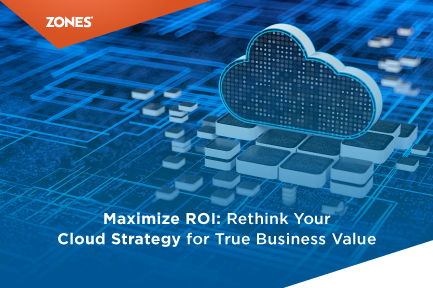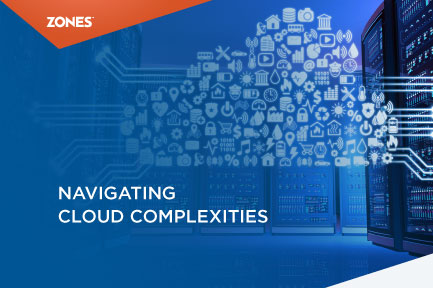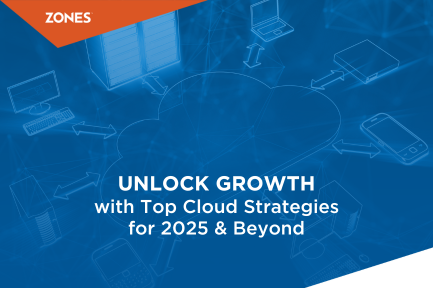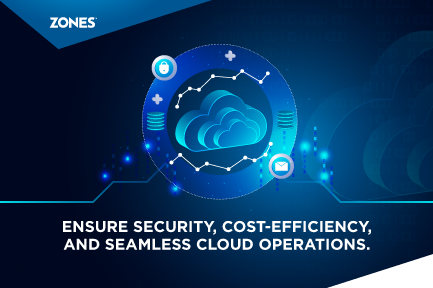Driving Business Excellence Through Cloud Value Maximization
As the world leans more into the digital era, businesses are increasingly turning to cloud computing. But the big question remains: How can they...
4 min read
![]() Zones
:
Apr 23, 2025 10:19:08 AM
Zones
:
Apr 23, 2025 10:19:08 AM

Across industries, the cloud is no longer just an enabler — it’s the foundation of modern enterprise transformation. Organizations invest significantly in cloud services, from innovation to scaling operations. But here’s the problem: despite rising budgets, the return on cloud investments remains underwhelming for many.
The root cause isn’t the cloud itself. It’s how organizations approach it.
A growing number of enterprises are beginning to ask the right question — “Are we truly getting value from what we’re spending in the cloud?” This blog explores why the cloud value gap exists and how leading organizations are rethinking their strategy to close it.
Over 90% of enterprises allocate more than 10% of their IT budget to cloud services. That percentage is even higher in some sectors, such as retail, energy, and public sector. Cloud is no longer a “pilot project” or an optional digital experiment. It’s mission-critical. Yet, satisfaction rates don't reflect that level of commitment. Why?
Enterprises are realizing that while the cloud makes it easier to consume infrastructure, it doesn’t automatically drive performance or outcomes. Many end up with:
In short, cloud spending becomes fragmented, ungoverned, and misaligned with the impact organizations set out to achieve.
Understanding the disconnect requires looking at what's happening on the ground. Here are three key reasons organizations struggle to extract real value from the cloud:
For many enterprises, cloud migration was a rush to modernize. It began as an infrastructure decision made by IT — often under pressure — with little involvement from finance or business stakeholders. However, value realization requires much more than hosting workloads. It demands integration with business priorities, performance metrics, and innovation goals. When cloud projects run in silos, without executive alignment or outcome tracking, the business impact becomes unclear — and so does the value.
Today’s enterprises operate across AWS, Azure, GCP, and private data centers. That diversity offers flexibility — but also introduces complexity. Without centralized visibility across these platforms, teams cannot:
This lack of clarity is why 58% of enterprises cite low consumption visibility as a major issue and 62% struggle with resource management. It’s not enough to be in the cloud; you need to control it.
As organizations scale in the cloud, they face what some call "cloudification" — rising cloud bills due to demand spikes, fragmented procurement, and inconsistent provisioning. These hidden or uncontrolled costs become major friction points, especially when finance teams ask, “What exactly are we paying for? In many enterprises, cloud budgets are treated like a black box — until it’s too late.
To shift from unchecked spending to real business impact, organizations must rethink their cloud approach from the ground up. Here’s what’s working for high-performing enterprises:
Modern enterprises embed cloud into every business layer — from customer experience and product development to compliance and data strategy.
That means:
A CCoE serves as a central body that governs your entire cloud ecosystem. It brings together IT, security, finance, and business leadership to:
According to industry data, enterprises with a functioning CCoE are more likely to track ROI and reduce costs by up to 30%.
FinOps is an emerging practice that merges finance and operations. It aims to bring real-time visibility, accountability, and control to cloud costs.
With FinOps:
Generative AI and large language models are resource-intensive. They need high-performance computing, fast storage, and scalable networking. Yet, only 25% of enterprises today feel mostly prepared to run advanced AI workloads. Enterprises must prepare their infrastructure now — with scalable cloud platforms, GPU-ready environments, and agile deployment models — to unlock the future potential of AI.
As enterprises adopt hybrid models, managing them like a single ecosystem becomes critical. Unified dashboards, standardized security frameworks, and workload intelligence platforms can simplify this complexity. Doing this well allows organizations to pick the best cloud for the job — without sacrificing visibility, compliance, or cost control.
At Zones, we’ve seen firsthand how enterprises struggle to realize the full potential of their cloud investments. That’s why we don’t just deliver cloud infrastructure — we help organizations design, optimize, and govern it for long-term value.
Here’s what sets us apart:
Cloud is no longer about migration. It’s about maximizing business value. If your cloud spending is rising but your impact isn’t, it’s time to rethink the strategy. Modern enterprises don’t just consume the cloud — they optimize, govern, and align it to growth. Zones can help you get there.
Let’s Move from Cloud Spend to Cloud Value — Together
Whether you're just beginning your cloud journey or looking to make your existing investments more impactful, Zones is here to guide the way. Speak with a Zones Cloud Expert today.

As the world leans more into the digital era, businesses are increasingly turning to cloud computing. But the big question remains: How can they...

As the digital landscape evolves, cloud computing remains one of the most transformative forces reshaping businesses' operations. With the global...

Today, cloud computing has become essential to organizations since it provides flexibility, scalability, and value for money. However, with...